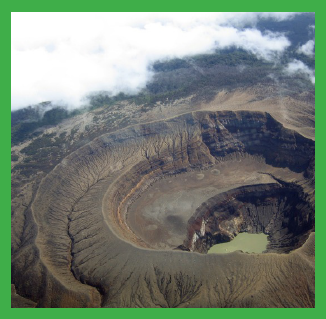Volcanoes
A volcano is a hole in the surface of the earth which leads down into a pool of hot liquid rock. This hot liquid rock is called magma. When a volcano erupts, or explodes, the magma beneath the surface comes out. Volcanoes can be inside mountains, or volcanoes can be inside deep pits. There are three types of volcanoes: active, dormant and extinct. Dormant volcanoes are volcanoes that don’t erupt. But scientists think dormant volcanoes may just be sleeping and could wake up and erupt again. Extinct volcanoes haven’t erupted for a long time and scientists think they will never erupt again. Active volcanoes are volcanoes that still erupt. Geologists are people who study the Earth. Geologists found that some volcanoes are underwater. Underwater volcanoes can erupt so much that the magma from the eruption can cool and make an island. In fact, the islands of Hawaii were made ffrom the cooled magma of an underwater volcano! The most active volcano in the world is Mount Nyiragongo. It’s in the Democratic Republic of the Congo. It often erupts. Volcanic eruptions can happen quickly and cause other natural disasters, like landslides, earthquakes, and tsunamis. Volcanic eruptions can destroy animals’ habitats and people’s homes.

